Bathroom
Best Collection Of Tiles & Stone For Bathrooms
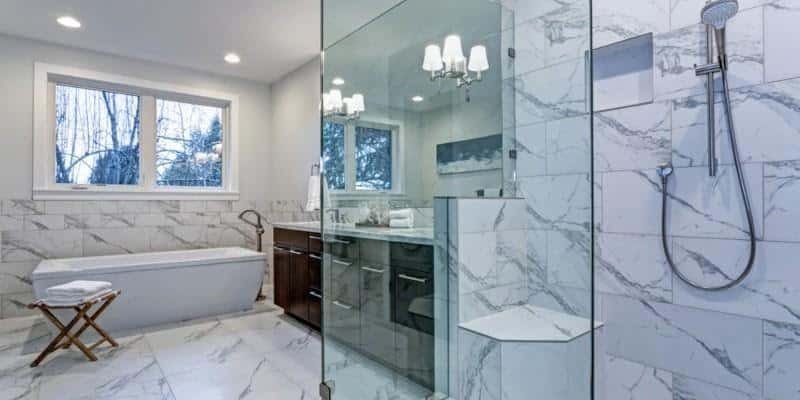
Best Tiles For Bathroom
Many homeowners put ceramic tiles in their bathrooms. Most, when choosing a collection, adhere to the principle of “beautiful and elegant”. And what are the advantages of tiles from famous Indian manufacturers of bathroom lining materials? The answer to this question is very simple and logical: it serves faithfully for a long time, is very durable, resistant to aggressive external “irritants”, resistant to high temperatures and humidity. Not a little, you must agree. Ceramics are safe for people and do not have toxins in their base. Eco-friendly building material. Glazed Ceramic tiles for bathroom have special requirements. Since the walls of this room are often in contact with chemicals: detergents, hygiene and cosmetics, which can leave traces in the form of stains. However, the tile must withstand these adversities, for this it must be chemically resistant.
Things To Know Before Choosing Tiles For Bathroom
When choosing tiles from the catalog of a domestic factory, make sure that you have all the advantages inherent in Indian tiles: design, quality, low price. And despite this, the first thing to do is to pay attention to your rating. Typically this information can be found on the package. First grade – highest quality and cost, 3 – lowest, both (suitable for builders). Second-class quality remains a mystery to the consumer. Also, pay attention to the front of the product. It must not have defects: depressions or bumps, cracks, bubbles, and the color is uniform. There should always be a t-shirt on the other side, its purpose is to ensure adhesion of the cement and the wall during installation. The hand marks on the packaging indicate it is for walls. The floor tiles will not work on the wall and vice versa, the wall tiles will not work on the floor. By the way, about the size, here everything is more or less free. The size ranges from 1 centimeter, such a mosaic is called mosaic (usually produced on a grid), and up to 120 centimeters.
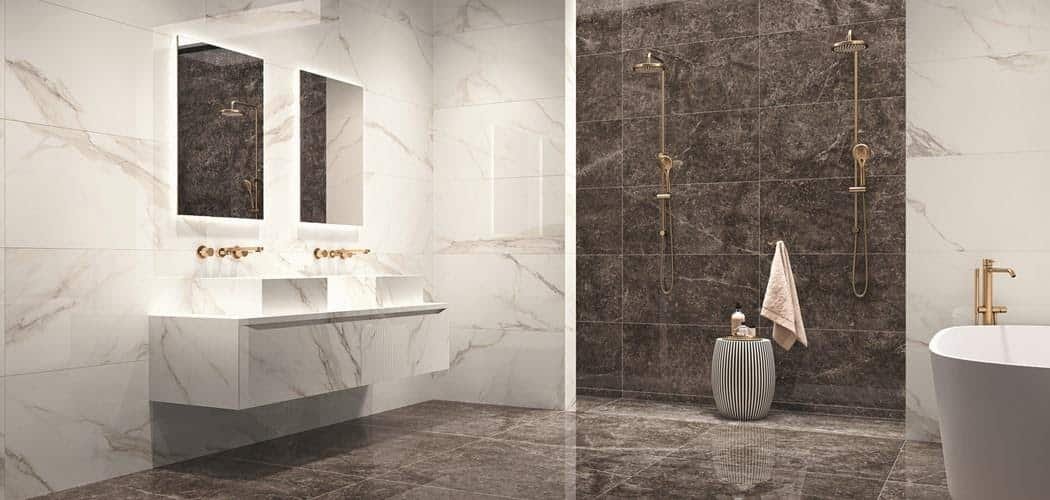
Manufacturers of cladding, today, in addition to the main products, can offer additional accessories: panels, inserts, borders. Be careful with your choice of color. Sometimes, fortunately, and sometimes not, the color variety of the collections is simply beautiful and defies any classification. The adhesive and all kinds of other materials for installation are selected with the operation in mind. Be sure to read the instructions on the back of the package. Tile installation can be done with seams or butt. In both cases, after laying, the joints are rubbed with a special solution, the so-called grout. The placement suture method has a slightly higher priority than the butt method. Since with such laying it is possible to hide existing defects, there is a greater chance that the tile will not crack or fall off.
Grouting
When it comes to grouting, it is better to use cement. The seam size of no more than 6mm is more suitable for cheap household products. If the seam is wide – up to 16 mm, then it is better to use special grout, which can smooth the deformation of the tile (offset) without damaging the seam. The amount of grout that is required to calculate is quite simple. If the tile has a standard size of 30 by 30 cm and a width of 2 mm, you will need 300 g of grout per 1 square meter. Prepare the solution following the instructions, thus ensuring that the dough is plastic and can completely fill the seams.
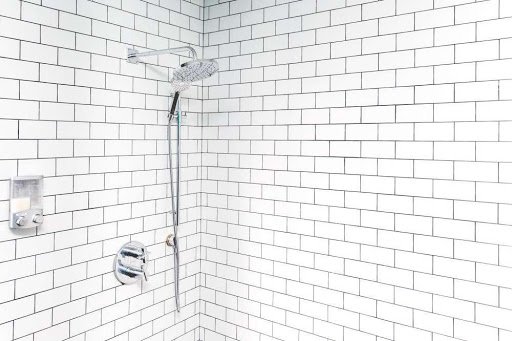
Some Useful Tips When Choosing Bathroom Tiles :
- When choosing bathroom tiles, stick to the size of the room. Large tiles will look good in a large room, small tiles in a small one.
- When choosing the color of the tiles, do not forget that light colors will visually enlarge the room, reflecting light and dark and having large images will reduce the room. Sometimes in a package you can find decorative elements with slightly different shades (sometimes this is provided by the design).
- To calculate the required number of tiles per room, take measurements of the room and add a 7-10% margin to the result. The extra amount is not at all superfluous, it is useful for trimming, adjusting, etc. situations.
Natural Stone For Bathroom
Natural stone has a natural and unique character that blends perfectly with the widest possible uses. Take, for example, a room in a house that we go to every day, and more than once: a bathroom. Tiling the bathroom with natural stone look porcelain slab makes it a temple of purity. The stone does not allow microorganisms to appear on the walls and floor, so for a long time you can forget about the necessary periodic minor repairs. The granite floors and walls, as well as the marble cladding, will transform the bathroom into a fabulous and beautiful luxury bathroom. Beautiful patterns and a wide range of colors of natural stone will emphasize the taste of the owner of the house and the noble level of decoration of the room. Having covered the room with slabs of natural material, you get a unique pattern that nature has been creating for more than a hundred years.
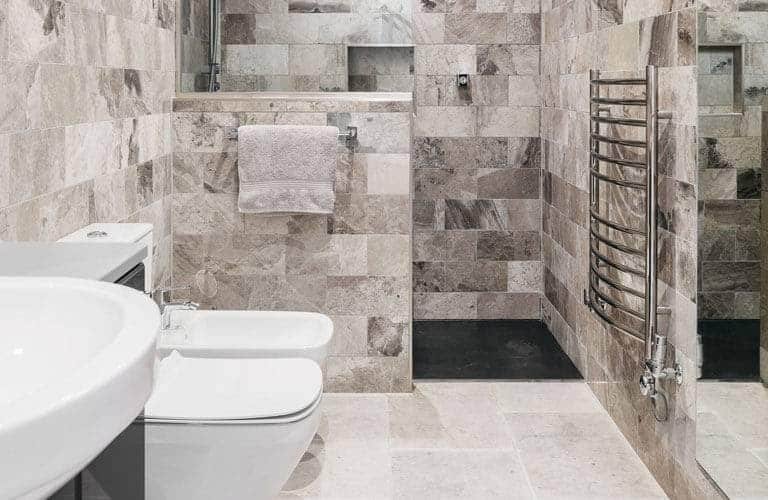
Stone Cladding
For finishing the floor and walls in the bathroom, as a rule, granite and marble tiles, marble mosaics are used. And if you can use both for the walls, then for the floor arrangement it is better to buy a natural marble tile. This is due to the fact that polished granite, in combination with water, forms a rather slippery traumatic surface. Marble tiles have a more porous structure, which means that they are not as smooth as granite. Granite and marble tiles are generally produced in the following sizes: 300×300, 400×400, 600×300, 600x600mm. The thickness of such a tile, as a rule, is 10mm, 15mm, 20mm, 30mm. Natural stone tiles are laid using the same technology as conventional porcelain stoneware tiles. For the bathroom cladding, tiles of various textures can be used: polished, polished, bush hammered, heat-treated, chipped. A characteristic of natural stone tiles is the difference in color of the slabs even of a certain breed from the same deposit. Accordingly, when buying a natural stone tile, you need to understand these nuances and discuss possible color discrepancies in advance. Among other things, when choosing stone tiles for a bathroom, you should pay attention to such a factor that, with sufficiently long contact with an aqueous medium, the material can change color. To a greater extent, this statement applies to marble, as the most porous and heterogeneous stone.
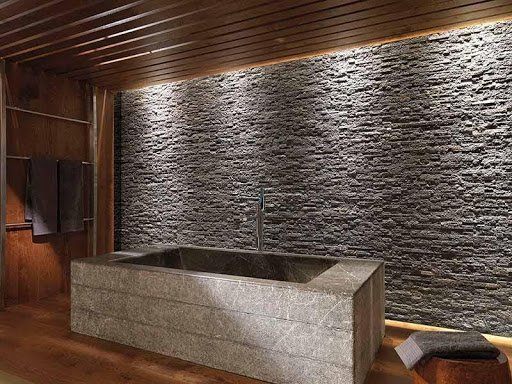
Natural Stone Tile Maintenance
The stone bath requires individual care. Although this is not such a laborious process, special detergents must be used. To clean the floor, it is advisable to use neutral compounds including wax. A perfect solution for cleaning marble and granite walls is a special soap. It allows you to qualitatively remove the formed plate from the stone, preserve the structure and its color. In addition, after such soap, a protective film appears on the stone that protects it from contamination.
Stone Countertop
An obvious continuation of the bathroom, tiled with natural stone tiles, will be the countertop under the sink and the stone frame of the bathroom itself. These products are valued for their luxury, pristine beauty, exclusivity, pleasant tactile sensations and respect for the environment. In addition to their direct functions, real stone countertops are undoubted bathroom decoration. Combined with a granite or marble sink, the whole set looks much more complete and harmonious. A marble bathtub or sink is made from a monolithic block according to an individual project.

When decorating a bathroom, toilet or swimming pool, natural stone is used most often today. It is simply irreplaceable in rooms with high humidity, due to its unique hygiene and environmental friendliness. Natural stone is not harmful to the body and does not lose its original appearance for a long time while providing a bactericidal effect. The surface of natural stone will not wear or crack during prolonged use. Due to its chemical properties, the material does not accumulate harmful substances, it does not enter into chemical reactions with various substances that are contained in other construction products. The main objective disadvantage of natural stone is its weight. Granite and marble are in fact some of the heaviest finishing materials, and this factor must be taken into account. In-wall and floor decoration, a stone laid with a “book much” looks very impressive, that is, with the effect of an open book or a butterfly. Along with marble mosaics, it is becoming fashionable to paint on marble with silver and gold. Marble and travertine with artificially aged surface texture, with holes, cracks, are more and more popular.
Read more: Tiles for Exterior and Interior
-

 Celebrity4 weeks ago
Celebrity4 weeks agoIs YNW Melly Out Of Jail? What Is The YNW Melly Release Date, Career, Early Life, And More
-

 Sports4 weeks ago
Sports4 weeks agoMore Than Just a Game: How College Sports Can Shape Your Future
-

 Tech3 weeks ago
Tech3 weeks agoAI Software: Transforming the Future of Technology
-

 Tech3 weeks ago
Tech3 weeks agoAll About Com. Dti. Folder Launcher: Features, Benefits, Tips, And More













